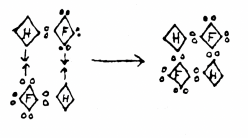From studying indigenous dyes to developing cancer therapies, a look at the changing priorities of IISc’s Department of Biochemistry

The Department of Biochemistry at IISc turns 100 next year. It holds the distinction of being the first department dedicated to the studies of biological chemistry in India. In the century since it was established, the department has seen and responded to a world war; a few epidemics; India’s struggle for independence; wars with neighbouring nations; and numerous governments with constantly changing ideologies and priorities. Add the myriad interests of the professors heading it to the mix, and what emerges is a rich tapestry of the history of life sciences in the Institute.
When tracing the evolution of the department, it becomes clear that the various changes that took place, particularly in the early years, were linked to the socio-economic transformations that the country underwent.
Early years
When the Department of Biochemistry was set up in 1921, there were only three departments at the Institute: Electrical Technology, General and Organic Chemistry, and Applied Chemistry (which became Biochemistry).
The Department of Biochemistry was not just new, it was the first of its kind. There was no blueprint to follow. Older universities like Cambridge too had only recently accepted biochemistry as an independent area of science. A new syllabus had to be created for students wishing to join the Department, since no Indian universities taught bacteriology and biochemistry.
It started firing on all cylinders almost immediately. IISc’s Annual Report for 1921-22 states: “The new activated sludge plant for dealing with a portion of the sewage from the western side of the estate has been completed during the year and should shortly be in operation. It will enable numerous researches on the biochemistry of the nitrogen cycle to be carried out.” With the aim of increasing the production of lac (a resinous secretion by lac insects with several uses including as dye and varnish), the Government of Mysore gave land with 200 Shorea talura trees, which are favoured by lac insects. The Government of Madras supplied tamarind from Bezwada district, so that the department could investigate if it was a commercially viable source of tartaric acid. Several such requests came pouring in from across the country.
The approach of the scientists in the department illustrates their dedication to commissioned work as well as to the scientific curiosity that originally brought them to IISc. For instance, while studying the natural history of the lac insects, the same Annual Report (1921-22) records that the researchers observed “an extraordinary development of honey at certain stages of lac development.” This ‘honey’ attracted ants that consumed it together with any potential parasites, thus protecting the lac insect. The department suggested that since honeybees were attracted to the ‘lac honey’, honey production from beehives could also be a by-product of a lac plantation.
Another section in the same Annual Report provides further proof of their commitment: a study on coconut retting, a practice in coastal areas, was conducted at the request of the Madras Government. Retting is a process in which coconuts are steeped in water, and the fibres are separated from the coconut by the action of microbes in water. It was observed that the binding material in the coconut fibres was being fermented very fast during the process. A number of water samples from the west coast were tested, but the analysis showed nothing unusual in the water. The scientists then carefully collected samples of coconut from all these areas and steeped their husks in a controlled retting process. Experimentation in aseptic conditions revealed the presence of at least two different hair-like bacteria in the husk, which seemed to affect the process adversely. Bacteriology of coconut retting became an important line of study after that.
This was not science from the ivory tower, but at the grassroots. The problems to be solved were tangible and the material to be studied was in the neighbourhood.
Changing priorities
During the first few years, the structure of the department was simple. It had one professor, and the rest were students or assistants. Specialised sections like Fermentation Technology and Cytology were born later out of widening interests. In the years to come, these sections further branched out, merged, and emerged as independent departments such as Microbiology and Cell Biology (MCB) and Molecular Reproduction, Development and Genetics (MRDG) at the Institute.
Research in the first 50 years was largely influenced by national needs and by the scientists themselves. While the first Chair, Gilbert J Fowler (1921-24), introduced techniques for treating sewage, composting and waste management, the second Chair, Roland V Norris (1924-29), brought in the knowledge of microbiology. V Subrahmanyan (1930-49), the third Chair, introduced studies on nutrition. Subrahmanyan’s tenure must have been tumultuous. It spanned the years of World War II, Indian Independence and the devastating Bengal famine of 1943. He had to gear up the department to meet the food and nutritional demands created by war and famine. Work on vitamins and antibiotics received a boost
Research in the first 50 years was largely influenced by national needs and by the scientists themselves
By this time, several universities in the country had also initiated biochemical research. To provide the opportunity for researchers across India to interact and exchange ideas, the department started a group called ‘The Society of Biological Chemists’ in 1930. This was also the time when researchers started looking in their neck of the woods for microbes to produce medicine and foods with high nutritional value. Microbes adapted to the Indian climate were necessary for efficient fermentation of Indian fruits and flowers, and for the distillation of sugars to produce alcohol and acetone that were used in the manufacture of ammunition. In 1940, M Sreenivasaya, a researcher at the department, started a library of native microbes. Within 10 years, nearly 2,500 cultures were deposited in it. In the coming years, this ‘National Collection of Type Cultures’ was an extremely useful resource to screen for organisms that produced antibiotics and enzymes for specific chemical reactions.
Plant biochemistry

Though the focus of many in the department had now turned towards human health, work on plant physiology and biochemistry continued. KV Giri, the fourth Chair (1950-58), a plant biochemist as well as a nutritionist, developed effective methods for separation and quantification of specific compounds from plants. The effect of compounds from common plants like garlic on the tuberculosis bacterium was demonstrated for the first time in 1946.
The effect of compounds from common plants like garlic on the tuberculosis bacterium was demonstrated for the first time in 1946
In a pivotal contribution in 1969, the agent causing lathyrism, a crippling and sometimes lethal disease observed particularly in poor farmers and labourers, was identified. An easy method was devised to neutralise this neurotoxin from ‘kesari dal’, a cheap and hardy legume, in order to help thousands of families in famine-hit, poverty-stricken areas in central India where it was commonly consumed.
Certain plant compounds have motivated important research in the department. This was proven again more recently in the mid-2000s when curcumin, a compound found in turmeric, was shown to be effective in treating malaria, in combination with artemisinin. This treatment is set to undergo clinical trials
Advent of molecular biology
It took a while before the focus of the department shifted from applied to pure biochemistry. SC Pillai and J Ganguly, in their overview of the department on its Golden Jubilee in 1971, suggested that the emergence of several institutes that practised biochemistry and trained biochemists in the years after Independence, lightened the burden on the department at IISc. The responsibility of being the scientific advisors for the agricultural and industrial sectors in the country was split between the many specialised institutes. This finally allowed the researchers in the department to move on to more fundamental questions in the field.
In the early 1950s, the structure of DNA and the sequence of insulin were discovered in Europe. It is unclear whether these discoveries created a stir at IISc at that time. It was only after PS Sarma took over as chair in 1959, that work on nucleic acids and on endocrine biochemistry began. During Sarma’s tenure (1959-70), the department entered the age of modern biochemistry. He increased the number of students and staff, and acquired more current equipment. In 1968, the University Grants Commission acknowledged the department as a Centre of Advanced Study in Biochemistry.
In the last 50 years, classical biochemistry has made way for molecular and cellular biochemistry. J Ganguly, who became the chair in 1977, used his substantial Rockefeller Foundation grant to procure instruments like a refrigerated ultracentrifuge, spectrophotometer, and a liquid scintillation counter. A wider net was cast in the field of public health in the 1980s, when inherited diseases were studied in infants born of consanguineous marriages, using biochemical approaches.
Today, proteins and nucleic acids have taken pride of place, and contributions are being made in transcriptional and translational regulation of genes, in chromosomal stability, and DNA damage and repair. Studies on abnormal recombination causing chromosomal breaks have led to identification of targets for cancer therapy. Today’s researchers are also investigating mitochondrial DNA and its role in disease.

(Photo courtesy: I-imazine)
Current research also focuses on more affordable treatments and vaccines using indigenous strains of yeast. The vaccine for Hepatitis B, of which millions of doses have been sold, is an example of this. Research on the immunology of viruses and other infectious agents has helped save many lives.
The Department of Biochemistry has undergone several transformations over many years. It has come a long way from the days of treating sewage and developing processes for making natural dyes to studying immune response and developing therapeutics for cancer. Many professors, whose stories have become legendary, have retired or moved on. Even the location of the department has changed from the beautiful colonial-era stone building to a more modern multi-storeyed one. Still, the ethos of the department remains the same.




